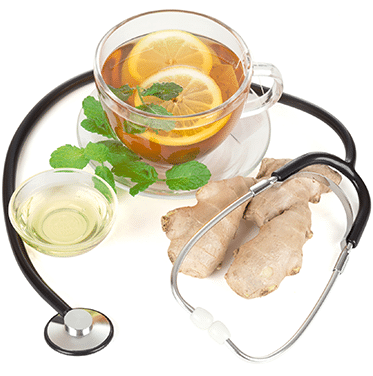Introduction
High blood pressure, also known as hypertension, is a prevalent health condition affecting millions across the globe. It silently increases the risk of severe complications such as heart disease and stroke, making it a crucial health concern to address. Statistics reveal that nearly one in three adults suffers from this condition, underscoring its widespread impact.
Managing weight effectively is essential for individuals with hypertension. Carrying excess weight puts additional strain on the heart and blood vessels, leading to elevated blood pressure levels. Therefore, maintaining a healthy weight can significantly improve blood pressure control, reducing the risk of associated health problems.
This article aims to provide you with safe and effective tips and strategies for weight loss if you have high blood pressure. By understanding the link between weight and hypertension, and implementing these thoughtful approaches, you can achieve your weight management goals while safeguarding your health.
Understanding the Link between Weight and Blood Pressure
The relationship between being overweight and increased blood pressure is both direct and significant. Excess body weight places additional pressure on the heart and blood vessels, leading to higher blood pressure levels. In fact, studies have shown that losing just 5-10% of your body weight can positively impact blood pressure, making it a critical component of managing hypertension.
Weight loss can offer remarkable benefits for blood pressure levels. With gradual and sustained weight reduction, individuals often experience a noticeable drop in both systolic and diastolic blood pressure numbers. According to the Centers for Disease Control and Prevention (CDC), even a modest weight loss can help lower blood pressure and improve overall cardiovascular health.
Caution: While the benefits of weight loss are clear, it’s crucial to approach it safely. Rapid weight loss methods, such as crash diets or intense exercise regimens, can be risky for individuals with hypertension. These extreme measures may lead to sudden changes in blood pressure and electrolyte imbalances, posing potential health threats. Therefore, a gradual and balanced approach to weight loss is recommended, ensuring that your heart health is always prioritized.

Consult with Your Doctor
Before embarking on any weight loss journey, especially when dealing with high blood pressure, it is crucial to consult with your doctor. Medical guidance ensures that your weight loss plan is both safe and effective, tailored to your unique health needs. Your doctor plays a vital role in helping you navigate this process safely.
- Health Assessment: Your doctor will assess your overall health and determine your readiness for weight loss. This assessment may include reviewing your current blood pressure levels, evaluating any underlying health conditions, and discussing your weight loss goals.
- Personalized Plan: Based on your health assessment, your doctor can provide personalized recommendations and strategies for weight loss. This may involve dietary changes, exercise suggestions, and lifestyle modifications that align with your health status.
- Medication Adjustments: It’s important to note that weight loss can lead to changes in how your body responds to medications. Your doctor may need to adjust your blood pressure medication dosage to ensure that it’s effective and safe during your weight loss journey.
By working closely with your doctor, you can embark on a weight loss plan that supports not only your weight goals but also your heart health. Remember, your health is a priority, and your doctor is your partner in achieving a healthier lifestyle.
Focus on a Healthy Diet
Adopting a healthy diet is a cornerstone of losing weight safely while managing high blood pressure. A well-balanced diet not only aids in weight loss but also helps maintain optimal blood pressure levels. Here are some key components and tips for crafting a diet that supports your health goals:
- Fruits and Vegetables: Aim to fill half your plate with colorful fruits and vegetables. They are rich in essential nutrients and low in calories, making them ideal for weight management.
- Whole Grains: Choose whole grains such as brown rice, quinoa, and whole wheat bread. These provide fiber and help keep you full longer, aiding in weight control.
- Lean Proteins: Incorporate lean protein sources like chicken, fish, tofu, and legumes. Proteins help build muscle and promote satiety.
- Healthy Fats: Include healthy fats from sources like avocados, nuts, and olive oil. These fats are beneficial for heart health.
Meal Planning Tips
- Portion Control: Use smaller plates to help control portions, and be mindful of serving sizes.
- Food Selection: Opt for fresh, whole foods and prepare meals at home to control ingredients and avoid hidden sodium.
Foods to Limit or Avoid
| Foods to Limit | Reason |
|---|---|
| Processed Foods | Often high in sodium and unhealthy fats, which can raise blood pressure. |
| High-Sodium Foods | Include salty snacks, canned soups, and processed meats. Excess sodium can exacerbate hypertension. |
| Sugary Beverages | Contribute to weight gain and offer little nutritional value. |
By focusing on these dietary strategies, you can create a meal plan that supports weight loss while keeping your blood pressure in check. For additional guidance, consider consulting with a registered dietitian.
Physical Activity
Engaging in regular physical activity is vital for effective weight management and controlling blood pressure levels. Exercise helps to burn calories, reduce body fat, and improve heart health, all of which contribute to lower blood pressure. Furthermore, staying active enhances overall well-being and can prevent the onset of additional health issues.
Suitable Types of Physical Activities
- Walking: A simple and low-impact exercise that can be easily incorporated into daily routines. Aim for at least 30 minutes of brisk walking most days of the week.
- Cycling: A great cardiovascular workout that is gentle on the joints. Consider cycling outdoors or using a stationary bike indoors.
- Swimming: Offers a full-body workout and is particularly beneficial for those with joint concerns. Swimming can help improve cardiovascular fitness while keeping stress on the body minimal.
- Yoga: Focuses on flexibility, strength, and relaxation, making it an excellent choice for stress reduction and blood pressure management.
Consult Your Doctor
Before starting any new exercise routine, it is crucial to consult with your doctor, particularly if you have high blood pressure. A healthcare professional can assess your current health status, suggest appropriate activities, and provide guidance on how to exercise safely. They may also recommend monitoring your blood pressure during exercise to ensure it stays within a safe range.
By selecting the right exercises and following medical advice, you can safely incorporate physical activity into your lifestyle, aiding in both weight loss and blood pressure control. For more detailed guidance, consider working with a certified fitness trainer who has experience with individuals managing hypertension.

